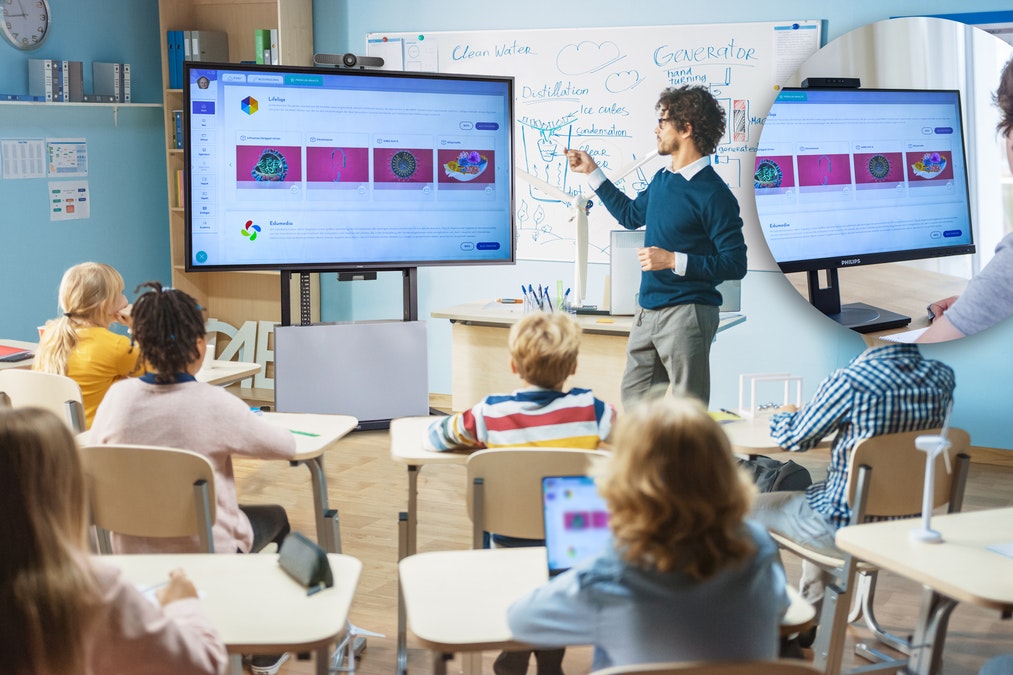Personalized Primary Science Tuition Singapore to Cater to Your Child’s Needs
Personalized Primary Science Tuition Singapore to Cater to Your Child’s Needs
Blog Article
A Comprehensive Overview to the Numerous Understanding Techniques in Main Science Guideline
The expedition of varied discovering methods in main scientific research instruction provides a possibility for instructors to enhance trainee involvement and understanding considerably. By taking a look at hands-on understanding strategies, inquiry-based approaches, and collaborative techniques, we can determine efficient methods that provide to different discovering designs.

Hands-On Learning Methods
Hands-on discovering strategies play a pivotal role in primary science direction, engaging trainees in energetic expedition and trial and error. These approaches permit students to interact directly with materials and sensations, cultivating a much deeper understanding of clinical principles. By utilizing manipulatives, versions, and real-life experiments, educators create an environment where pupils can observe, hypothesize, and evaluate their ideas.
Such techniques not just enhance understanding however additionally grow crucial thinking and analytic skills. When trainees take part in activities like developing easy machines, planting seeds, or performing chain reactions, they are motivated to ask inquiries and look for responses through their very own monitorings. This experiential technique assists to debunk intricate scientific principles, making them more accessible and relatable.
In addition, hands-on discovering promotes cooperation amongst peers, as students typically work in teams to carry out experiments or share findings. This team effort not only enriches their understanding experience however additionally establishes important social abilities. Eventually, integrating hands-on techniques in key science guideline promotes a long-lasting love of discovering and curiosity regarding the natural world, laying a solid structure for future scholastic quests in scientific research and beyond.
Inquiry-Based Understanding
Inquiry-based knowing is an educational method that encourages trainees to ask questions, check out sensations, and construct their own understanding of clinical concepts. This technique changes the emphasis from traditional teacher-led direction to an extra student-centered experience, where learners take the effort in their instructional trip. By fostering interest, inquiry-based understanding advertises deeper interaction with the product, permitting students to check out topics in a purposeful context.
In practice, this method typically entails hands-on experiments, monitorings, and crucial thinking activities that line up carefully with the clinical approach. Pupils are motivated to create theories, layout examinations, and analyze data, which cultivates important skills such as analytical and logical reasoning. The role of the teacher in this structure is to promote expedition, leading pupils with the questions procedure while motivating independent thought and partnership.
Furthermore, inquiry-based knowing nurtures a sense of possession over the learning process, encouraging pupils to go after understanding actively. This approach not just improves understanding of scientific principles yet additionally promotes a lifelong love for learning, outfitting pupils with the abilities necessary to browse a significantly complex globe.
Collaborative Knowing Approaches
Collective learning techniques equip trainees to participate in significant communications with peers, fostering a shared duty for their educational outcomes. In main scientific research instruction, these methods urge students to collaborate to explore scientific principles, address problems, and perform experiments (primary science tuition Singapore). By taking part in team activities, trainees can utilize varied point of This Site views, permitting richer understanding and retention of clinical expertise
One trick aspect of collaborative discovering is the focus on interaction abilities. Trainees have to express their ideas, pay attention proactively to others, and negotiate ideas, all of which are crucial proficiencies in both academic and real-world contexts. This social interaction not only enhances their understanding of clinical concepts but additionally advertises synergy and problem resolution abilities.
Additionally, collective discovering commonly leads to increased inspiration and involvement. When pupils see the value of their contributions within a team, they are most likely to take ownership of their learning journey. Teachers can promote this process by designing organized group jobs that line up with curriculum objectives while offering guidance on reliable partnership techniques. Overall, including collective learning techniques in primary scientific research direction grows a dynamic understanding atmosphere that prepares trainees for future scholastic and social difficulties.
Innovation Assimilation in Science
The combination of modern technology in primary science direction boosts learning experiences by offering ingenious devices and sources that support various mentor methods, consisting of joint learning - primary science tuition Singapore. Making use of electronic systems, simulations, and interactive applications permits pupils to involve deeply with clinical concepts, helping with a much more hands-on technique to knowing
Online labs, as an example, make it possible for students to perform experiments securely and successfully, advertising inquiry-based understanding. These devices can imitate real-world clinical circumstances, permitting pupils to envision intricate procedures that would be hard to reproduce in a conventional classroom setting. Modern technology cultivates interaction and collaboration amongst pupils, as they can share findings and work blog together on tasks with online systems.
In addition, multimedia presentations and educational video clips can enhance lessons by accommodating varied knowing styles, making abstract principles a lot more available. Information analysis devices likewise empower pupils to collect and analyze scientific information, strengthening vital thinking abilities. Overall, the critical consolidation of modern technology in main scientific research direction not just improves involvement however additionally prepares trainees for a highly sophisticated culture, equipping them with crucial skills for future clinical undertakings.
Separated Guideline Techniques
Differentiated direction approaches are vital for resolving the diverse requirements of students in main scientific research education and learning. These strategies enable educators to tailor their mentor techniques to accommodate varying capacities, interests, and discovering designs within the class. By using distinguished direction, instructors can develop a comprehensive environment that fosters interaction and improves understanding of clinical principles.
One reliable approach is to use flexible grouping, which allows pupils to collaborate with peers at comparable ability degrees or with differing point of views. This technique motivates peer discovering and advertises essential reasoning. In addition, supplying selections in assignments can encourage pupils, permitting them to choose jobs that resonate with their interests while still meeting curricular purposes.
In addition, including tiered tasks is one more important technique. By designing jobs with differing levels of intricacy, instructors can make sure that all students are appropriately challenged, no matter their efficiency. Making use of formative analyses to determine understanding more enables teachers to readjust their training techniques dynamically, ensuring that each student receives the assistance they need.
Inevitably, carrying out distinguished direction strategies in key scientific research education and learning not only boosts student understanding outcomes yet likewise cultivates an enthusiasm for scientific research, preparing trainees for future scholastic pursuits.

Verdict
In recap, efficient primary scientific research direction necessitates a multifaceted technique that incorporates hands-on learning, inquiry-based methods, and collaborative methods. The combination of modern technology and differentiated instruction even more caters to diverse knowing styles, promoting an atmosphere favorable to expedition and critical thinking.
The expedition of varied understanding approaches in key scientific research guideline provides a chance for teachers to improve student engagement and comprehension dramatically.Hands-on understanding strategies play a crucial duty in main science instruction, engaging pupils in active exploration and experimentation.Inquiry-based understanding is an educational technique that motivates students to ask questions, explore sensations, and construct their very own understanding of clinical ideas.Collaborative understanding techniques empower students to involve in purposeful interactions with peers, cultivating a shared responsibility for their instructional outcomes. On the whole, integrating collaborative understanding methods in primary scientific research instruction grows a vibrant knowing setting that prepares students for future scholastic and click here now social challenges.
Report this page